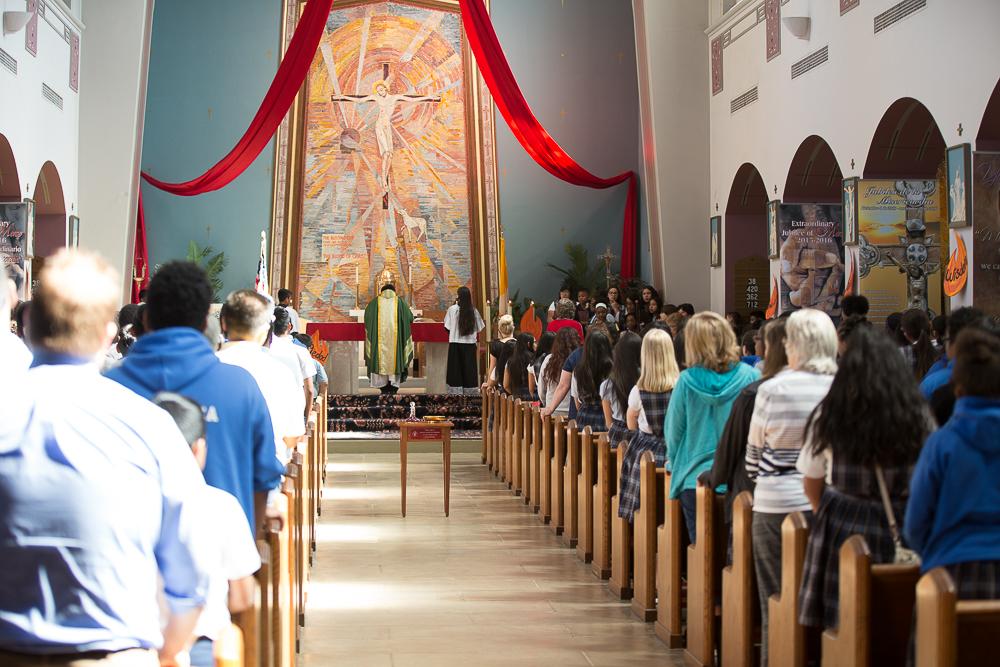God's grace is everywhere and always present. In the Catholic Church, sacraments are the outward and visible signs in which we celebrate this grace. Precisely because sacraments are tangible and visible experiences, our sacramental celebrations are full of rich symbolism. We feel water and oil, see white garments and fire, taste bread and wine, and actively exchange rings, to name just a few examples.
Because sacraments are universally celebrated in Catholic churches around the world, they serve as magnificent occasions to invite families and communities to recognize and deepen their encounter with God's grace. They also offer profound opportunities to integrate outward and visible signs of the cultural richness of our Church.
Over the next few months, the U.S. Church will be doing just this – incorporating more cultural traditions into the experience of the sacraments, starting with the sacrament of marriage. The Order of Celebrating Matrimony, an updated name, will be celebrated using language that more closely reflects the changes made to the new Roman Missal.
Additionally, and perhaps most exciting, new ceremonies that have traditionally been included as marriage practices in many Hispanic and Filipino Catholic weddings will now be embraced as options in the new rite. These ceremonies include an exchange of coins and a blessing of a lazo (a veil or cord), which is wrapped around the couple during the nuptial blessing.
"Historically speaking, the Church has been very open to using the elements of various cultures in celebrating the sacrament of marriage. Different cultures have different ways of expressing what marriage means, and the Church has shown a lot of willingness to take in some of these cultural expressions," explains Father Andrew V. Menke, associate director of the U.S. Conference of Catholic Bishops' Secretariat of Divine Worship. The cord tied around a couple symbolically represents their sacramental bond to one another. And the exchange of coins is an outward sign that they now share everything, adds Fr. Menke, "which is what marriage is about."
These forthcoming additions by the USCCB should lead all of us in Catholic schools to reflect upon the cultural aspects of the sacraments we prepare for and celebrate in our faith communities. Do we welcome the active participation of padrinos (godparents) at First Holy Communion? Do we allow for the wearing of aiguilettes or ribbons on sleeves, the sharing of recuerdos, or the use of lit candles? Perhaps we need to consider the languages we incorporate at the celebration of First Reconciliation or the music choices we use at Confirmation Masses?
The sacraments are such outward symbols of what we believe that taking time to consider their cultural dimensions is vitally important. We invite your school community to ponder the following questions to get the discussion started:
- What do I know about the cultural demographics of our school and parish?
- How can I learn more about the sacramental practices and traditions within these cultural groups? What resources can I turn to?
- How could the process of sacramental preparation be adapted to incorporate culturally rich traditions and values?
- How might the family, particularly the extended family, be welcomed into the process of sacramental preparation and the liturgical celebration of the sacraments?
- How could the liturgical celebration of the sacraments better reflect the cultural richness of our school and parish community? What textiles, hymns, instruments, flowers, and imagery could be added to make the liturgy more dynamic and culturally sustaining? Are the families involved in the liturgical planning?
Additional Resources:
Source:
Hudock, B. (2015). Changes coming to the marriage rite in the U.S.: Rollout of ‘Order for Celebrating Matrimony,' approved by the Vatican, is expected some sometime in 2016. Our Sunday Visitor. Retrieved from https://www.osv.com/OSVNewsweekly/Story/TabId/2672/ArtMID/13567/ArticleID/18852/Changes-coming-to-marriage-rite-in-the-US.aspx

